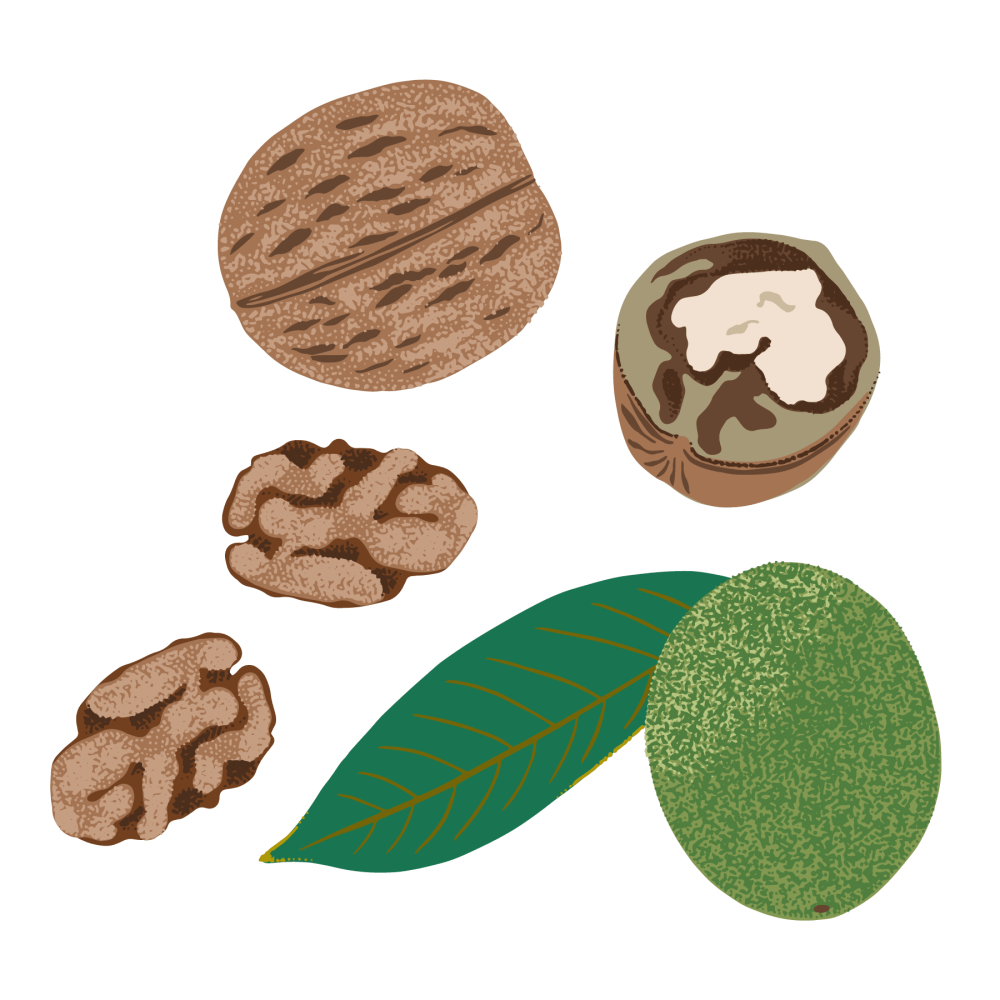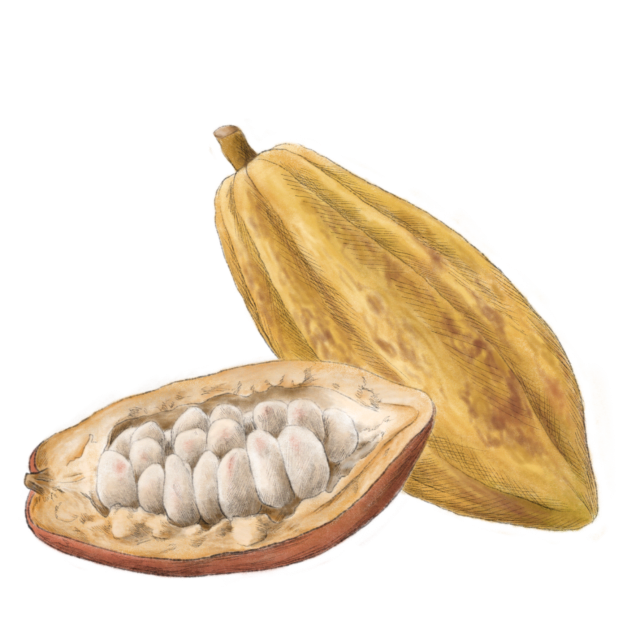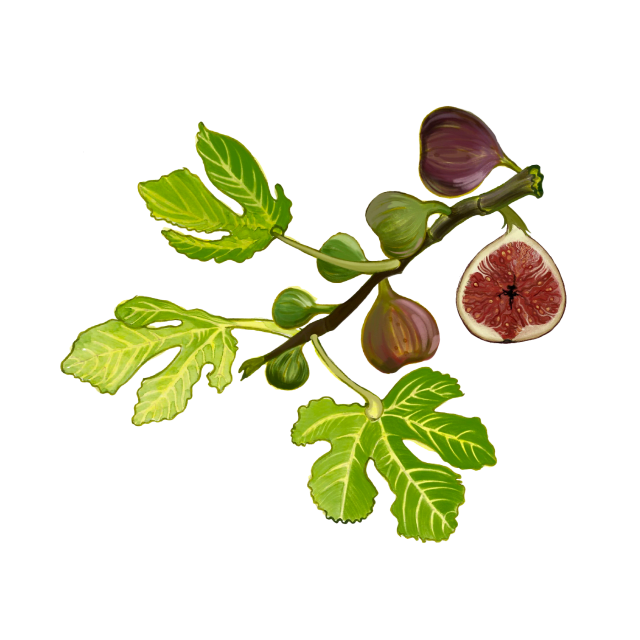Walnut

Latin name: Juglans regia
Uses: nut, oil, liqueur
What are walnuts?
Walnuts are pretty special. They’re in their own plant family, for one (also the family of pecans and hickory). Though walnuts aren’t true nuts (they’re technically the seed of a fruit called a drupe), it is truly nuts how nutritious and culinarily versatile they are.
Why are walnuts healthy?
These brain-shaped morsels are smart food for sure: nutrient-dense treasure troves of vitamins, minerals, and omega 3 fatty acids. Walnuts can help lower cholesterol, reduce the risk of breast and prostate cancer, manage weight, prevent hair loss, and mitigate some effects of aging.
What do walnuts taste like?
Walnuts are nutty and earthy-sweet with a slight pleasant, tannic bitterness in the thin skin surrounding the nut meat. This astringency makes them perfect for spiced liqueurs like nocino, but more importantly it helps walnuts balance richness and sweetness in other foods. Their high fat content gives walnuts creaminess but they still have a nice, tender crunch.
How do I use walnuts?
We don’t know who needs to hear this, but you can make a straight-up walnut pie — don’t let pecans steal all the glory! Walnuts are used in lots of holiday dishes because they improve pretty much any baked good they touch, especially when honey is involved. Use them in baklava, hodu-gwaja (Korean walnut cakes), sticky buns, and Georgian gozinaki. For a main course application, try Chinese walnut honey shrimp.
Georgian cuisine has lots of great uses for walnuts, including the versatile, savory, and protein-rich walnut paste nigvzis sakmazi, perfect for mixing with finely chopped vegetables to make pkhali (vegetarian pâté) and badrijani (eggplant rolls). To the southwest in Lebanon, the savory-sweet dip muhammara combines walnuts with roasted red pepper and pomegranate molasses — slather this on warm flatbread at your next mezze. Walnuts provide a textural protein bump to vegetarian meatballs, burgers, and loaves, but it’s not just the nutmeats that are delicious. Walnut oil is superb drizzled on roasted vegetables, salads, and even fresh fruit; however, because it has a low smoke point, you shouldn’t cook with it.
What do walnuts pair well with?
Walnuts are wonderful with savory flavors from the Mediterranean and Middle East, including herbs, spices, and nightshades like peppers and eggplants in various dips and spreads. They’re also good with aged cheeses and honey.
Where do walnuts grow?
The walnut originated in modern-day Iran, with a native range stretching from the Balkans to southwestern China. Vast walnut forests grow in Kirgizstan, but they’re mostly commercially grown in China and the United States, with several dozen varieties in cultivation.
How to buy walnuts:
You can buy them whole, and shell them with a nutcracker as needed, or you can buy shelled halves or pieces for convenience. Be advised that they will go rancid over time, so keep them in a container in the fridge.
Fun walnut fact:
The artists Leonardo DaVinci and Rembrandt used inks made from the husks of black walnut, and the dye is so strong it was even used by Romani people for long-lasting temporary tattoos. The pigment chemical, juglone, is also found in henna used for dyeing hair and mehndi tattoos. Juglone also helps walnut trees exclude competing plants from growing in their understories.









